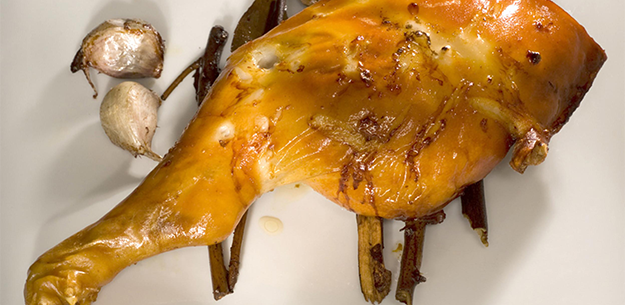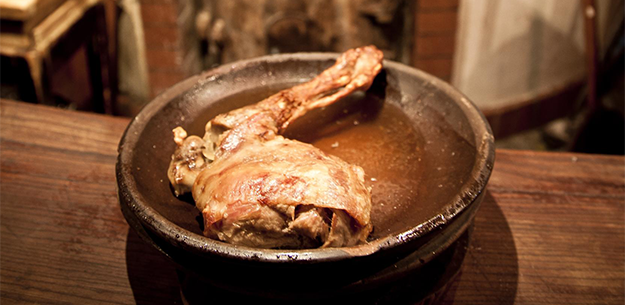.png.transform/rendition-xs/image_image%20(1).png)
Roasting
Traditional wood-fired ovens, used both for baking bread and for roasting meat, are still in use in many parts of Spain. Once, every town and village had local panaderos, bread makers, who fired up the ovens daily. Families living on isolated rural farmsteads had their own ovens, where baking provided bread for a whole week.
Once the ovens were hot and the loaves baked, other foods could be cooked as well- buns and holiday breads, casseroles that bubbled in the residual heat, joints of meat that became meltingly tender in the slow, steady oven.
Typical ovens, whose design has changed very little since Roman times, are often free-standing structures, so wood smoke can be vented directly to the outdoors. If enclosed in a building, they require a chimney.
Constructed of brick or other clay material, the ovens are shaped in a dome. Bricks provide good heat retention and the vaulted interior allows best circulation of heat. A mortar of clay and limewash holds the bricks together. The outside may be covered with a similar mixture and kept whitewashed. A small arched door gives access to the interior and, at the back, a small hole provides an inlet of fresh air.
"Wood-fired" is, perhaps a misnomer. Ovens were heated with whatever flammable substance could be foraged or bartered. A commercial bread maker might order a load of almond shells, olive wood or orange wood cuttings. A rural family might gather heaps of grape vine shoots, and wild shrubs such as gorse, furze, broom and rosemary.
Brittle twigs of brush burn fast, slowly igniting thicker roots and branches. As each layer burns down, more fuel is added. When oven is hot enough for baking, the coals and ashes are pushed to one side and the oven's floor is swabbed with a rag mop soaked in water. Once up to temperature, the bread or other foods are placed in the oven, which cools very gradually. More modern ovens have a separate firebox, so that fuel can be added to extend the baking time.
The bread oven is used for more than bread. Bell peppers and onions, apples and sweet potatoes can be roasted in the rescoldos, the hot embers. Clay pots filled with meat and legumes and covered tightly can be left to cook slowly. Whole suckling lambs, kids and piglets are roasted to succulence, infused with the subtle smoky aroma. Restaurants in the provinces of Salamanca, Segovia, Ávila, Burgos and Zamora (all of them in Castile-León) are famed for their meats roasted in wood-fired bread ovens.
The roasting method varies somewhat, according to tastes. Usually, the suckling pig, suckling lamb, lamb or kid are split lengthwise, salted and placed cut-side up in a shallow earthenware tray. Melted lard and a little water are poured over the meat. The roasting starts at a high temperature. After about 40 minutes, as the oven cools, the meat is turned skin-side up and basted again to finish roasting at a moderate temperature fro another 30 minutes.
Janet Mendel is a food writer based in southern Spain. She is the author of several books about Spanish food, including Cooking in Spain and Tapas: a bite of Spain (Santana Books, Spain); My Kitchen in Spain and Cooking from the Heart of Spain-Food of La Mancha (Harper Collins), and Traditional Spanish Cooking (Frances Lincoln, UK).


- Roasting 1
- Roasting 2
